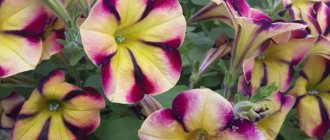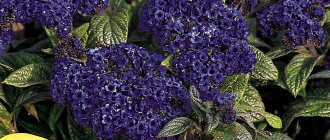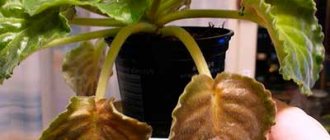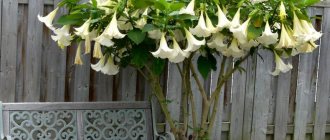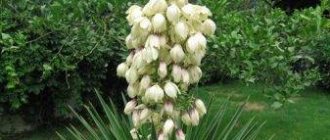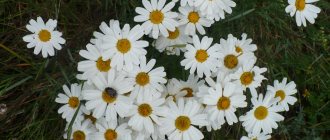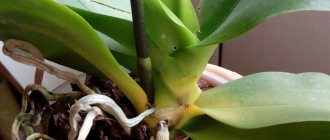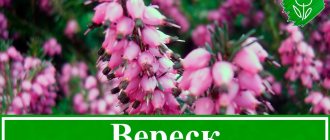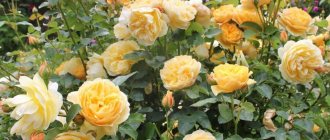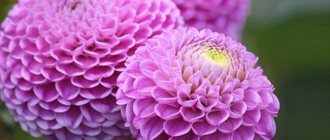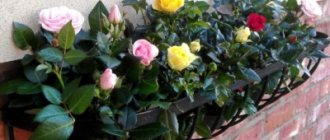Lobelia ampelous belongs to the Campanula family. The genus includes more than 300 species. Most grow in the subtropics and temperate regions. In Russia, in the wild you can find Lobelia Dortmann, sessile leaf. In the climatic conditions of the central zone of our country, the flower is grown as an annual plant. It has earned love among gardeners due to its attractive appearance and long flowering period. It is actively used in landscape design, used to decorate balconies and gardens, summer cottages, alleys, parks, and planted in hanging pots.
Description of ampelous lobelia
The plant is named after the 16th-17th century scientist Matthias de L'Obel. He was the court doctor and botanist of the English king James I.
In its natural habitat it is a tropical perennial plant. The leaves are small, located alternately on hanging shoots. The plates are lanceolate in shape, most often dark emerald in color.
Compact in size, but blooms luxuriantly. The flowers are bisexual, so there is no need for artificial pollination. The buds grow densely along the entire length of the stems. The coloring is varied: from bright to pastel colors.
Ampelous lobelia can be planted singly or in combination with other plants. She calmly tolerates any neighborhood and will perfectly complement any flower arrangement.
What is this flower
Lobelia is one of the popular plants among gardeners. It attracts attention with its delicate flowers, which grow in dense groups, and the ampelous forms hang beautifully from the flower pots, reminiscent of a waterfall. This plant is a perennial shrub of the Bellflower family, which in our country is grown, in most cases, as an annual.
The flower's homeland is South Africa, where the flower grows on wet and rocky cliffs, although it can be found almost all over the world in tropical and temperate climates. In total, there are about 300 species of lobelia, of which only 20 are cultivated.
Popular varieties
There are many species, but only some of them are cultivated. Almost all of them are hybrids of Lobelia Erinus or Sadovaya. Some of the most beautiful varieties grown under artificial conditions:
| Name | Description | Flowers |
| Sapphire | With hanging branches, up to 35 cm in length. | Small, sapphire with light dots. |
| Blue fountain | It has 6-8 flowing branches with inflorescences. Up to 30 cm long. | Heavenly shade with a white spot in the middle. |
| Red cascade | With strong, well-developed lateral processes reaching 35 cm. | Dark pink or raspberry. Flowering is abundant and long lasting. |
| Blue Sky Regatta | Early variety. Shoots are up to 20-25 cm long. The stems reach 25-30 cm. First they grow upward and then fall down. | Small, collected in multiple inflorescences. Petals are cornflower blue with an amethyst tint. There are also specimens with blue and blue buds. |
| Lilak Spash Regatta | Lilac-snow-white. | |
| Marine Blue Regatta | Undemanding to care. The most important thing is not to oversaturate the soil with moisture and minerals. | Rich blue tone. |
| Regatta Rose | An early variety, the beginning of the growing season is 4 weeks earlier than other species. | Pink with a beige core. |
| Ricciardi | Hybrid. Propagation occurs not by seeds, but by cuttings. The shoots are long and strong. | Various colors. |
| Marquise | A cascade-shaped bush with a dense crown. The stems are hanging, well branched immediately at the base, leafy. Up to 40 cm in length. The leaves are dense, oblong, shiny, and small in size. They are arranged alternately on the shoots. | Purple-scarlet, have 2 lips in structure. They reach 2 cm in circumference. With proper care, they bloom until the first frost. |
| Niagara | The branches of a dense, cascading bush reach 35-40 cm. The greenery is small, bright malachite. Grows along the entire stem. | Small, two-lipped, dark blue or violet. They begin to form in June. |
| Blue cascade | Shoots up to 30-35 cm, highly branched, with developed green mass. The plates are glossy, compacted. | Bright sapphire, small. The inflorescences are located close to neighboring ones, this gives the bush volume. |
Growing ampelous lobelia from seeds
The seed takes a very long time to hatch, about 80-90 days. Therefore, you need to sow seeds at the end of winter or early spring. In the first case, they need to be germinated under fluorescent lamps, because there is not enough natural light. If sown in March, they will sprout without additional help.
Lobelia seeds are microscopic, so they are sown in groups in wide containers and plates, peat containers. For planting use:
- garden and peat soil in equal quantities;
- soil mixture purchased at the store.
Before sowing, the soil must be disinfected. This can be done in two ways:
- soak in a solution of potassium permanganate;
- heat in the oven.
Growing from seeds step by step:
- Mix the prepared substrate with the same amount of sand.
- Lay out a drainage layer of crushed brick or expanded clay.
- Sprinkle moist soil on top.
- Scatter the seeds over it in small groups.
- Spray with a solution of potassium permanganate or soft warm water from a spray bottle. There is no need to sprinkle a layer of soil on top.
- Cover with glass or film to create greenhouse conditions.
- Place the container in a room at room temperature until germination.
The seeds are sown immediately in a permanent place. This method is called “lazy” among gardeners. With this method, flowering can be expected only in mid-August. Germination will be low.
Sowing is done in late spring. The seeds are mixed with sand and spread over moist soil. Further care for them is the same as when planting indoors.
Planting: where to plant and how to plant?
Planting lobelia is quite a labor-intensive process. The plant is planted not only in open ground, but also very often in flowerpots and balcony boxes. To begin with, lobelia seedlings are grown . This is made from seeds at home:
- Soil preparation. For sowing, choose the following soil: sand, leaf humus, turf soil in a ratio of 1:1:1 and expanded clay for drainage.
The soil must first freeze before sowing, so it is left for some time in an unheated room. Before placing the substrate in containers, it is calcined for disinfection. Afterwards they moisten the containers themselves and plant the seeds. Due to the small size of the seeds, they are mixed with sand to make planting easier.It is necessary to lay a drainage layer at the bottom of the container.
- Sowing takes place at the end of winter - beginning of spring. The seeds are slightly buried in the soil. Afterwards, the containers are covered with glass or film and placed in a place with a temperature within 22-25 ºC.
- Every day it is necessary to ventilate the seedlings for 30 minutes. And wipe any condensation that appears from the glass or film.
- With proper care, seedlings appear within 7 days. But the cap should not be removed immediately. It is removed after the seedlings have grown 3 centimeters. At the same time, the room temperature must be reduced to 20 ºC.
- A month after sowing, it is necessary to make the first pick. To do this, it is better to take a small spatula. Picking is best done in separate cups with peat or pots. The second picking (late spring - early summer) takes place already when planting in open ground.
When planting in open ground, lobelia should be formed into separate bushes (approximately 5-6 seedlings), between which a distance of 15-20 centimeters must be maintained.
After the sprouts grow 3-4 centimeters, their tops should be pinched to form a decorative crown shape . Afterwards this will need to be done every 2-3 weeks.
Lighting and location
Ampelous lobelia should be planted in places with good lighting, otherwise the seedlings may begin to stretch upward, as a result of which the stems will grow thin. It is good to choose a place where there is partial shade and the plant will not receive direct sunlight. The north side of the house is good for this.
Important! Lobelia does not like drafts. Therefore, it is better to harden the plant before taking it out into the fresh air. To do this, you need to gradually lower the temperature in the room and gradually increase the time spent in the fresh air.
Depending on the region, the amount of light for lobelia may vary depending on the time of year. On average, lobelia needs to be exposed to light for 12-16 hours .
Let’s say if this is Moscow (central region) and the sun always shines through the windows of the apartment, then the daylight hours should be as in Table 1.
Daylight hours in the central regions
Table 1
| Month | Watch |
| January | 7,5 |
| February | 9,5 |
| March | 12 |
| April | 14 |
| May | 16 |
If the apartment is located in Khabarovsk (Far Eastern region), then the duration of daylight hours is presented in Table 2.
Length of daylight in the Far Eastern regions
table 2
| Month | Watch |
| January | 9 |
| February | 10 |
| March | 12 |
| April | 13,6 |
| May | 15 |
If the windows of the apartment face north and it is constantly dark, then the plant will need to provide artificial lighting. A plant planted in January will need additional lighting for 5-9 hours, in March - 2-4 hours.
Soil requirements
What should be the soil for ampelous lobelia?:
- loose;
- nutritious;
- without humus and manure.
The most suitable for the plant is a peat mixture or soil purchased from a specialized store.
The soil in an open area should have a balance of humus and river sand. The soil must be neutral or slightly acidic .
If the soil is saturated with organic fertilizers, then the number of inflorescences will be reduced, but the foliage will be juicy and lush.
Before planting lobelia, it is necessary to prepare the area well. For this:
- The soil should be dug up.
- Loosen the dug area and renew it by sprinkling it with sand and fertilizer.
- If the soil is acidic, you should add slaked lime, chalk or dolomite flour.
- Leave the area to stand for 2-3 weeks.
How to care for seedlings
Growing seedlings from seeds is quite difficult. It is necessary to constantly monitor the growth process:
| Care | Recommendations |
| Shelter | Clean to eliminate fumes from the walls. Keep the seedlings open for 15 minutes twice a day. After the first shoots appear, remove the cover. Do this gradually, increasing the ventilation time every day by several hours. This will strengthen the immunity of young bushes. |
| Watering | Regular and plentiful, because Lobelia has a poorly developed root system. The substrate should not be allowed to dry out. Water the soil through a spray bottle or tray. You need to make sure that there is no stagnation of water. This will cause root rot. |
| Ventilation | When it is warmer than +10 °C outside, take it out onto the balcony, loggia or terrace. Gradually increase the “walking” time; after a week, leave it outdoors for the entire evening and night. Shade young bushes; direct rays of the sun can cause burns and the plants will die. |
| Top dressing | One-time use, 30-40 days after sowing. It is better to use mineral fertilizers purchased in the store. They must be diluted with water in the concentration indicated on the package. After this, spray the bush with the solution. |
| Dive | It is only necessary if the seeds are distributed randomly throughout the container. Transplantation can be done when the seedlings grow 2-3 true leaves. Diving is done in groups of 4-8 bushes. The lobelia root system has the ability to quickly recover. Therefore, to transplant sprouts, you can cut the soil into squares with a blade. Move pieces of soil into larger containers. |
| Trimming | To avoid strong growth of bushes in length, it is necessary to prune shoots that have reached 5-6 cm. If the goal is to obtain long and hanging shoots, there is no need to pinch. After flowering ends, wilted flower stalks must be cut off. This promotes repeated and lush formation of buds. The second time pruning is done in August. If you plan to collect seeds, there is no need to do this (the seed must have time to ripen before the first frost). |
The place of lobelia in landscape design
Lobelia is quite often used in landscape design. The flower looks great both on the balcony and in the form of “carpets” near ponds, in alpine slide compositions next to other perennials. In modern design, lobelia is widely used to create coziness in the corners of the garden, for which it is planted in flowerpots or containers.
The most common places for planting plants at home are flower beds, borders, and hanging baskets.
In the flowerbed
Before planting a flower on a garden bed or flowerbed, you need to think about what the color scheme of the future composition will be.
- Rabatka is a rectangular flower garden in the form of a narrow strip of about 2 m, located along a fence or garden path with other plants.
- To combine with lobelia, the flowerbed must be formed from similar shades: blue, lilac, light blue, violet. This combination of colors looks quite attractive: crimson and white, blue and red, yellow and blue.
In hanging baskets
When growing ampelous species, such flowers look most beautiful in hanging baskets in the form of a ball - the plants are a continuous carpet of flowers that hides the frame. One of the easiest options for planting lobelia is coconut liners. Holes are first made in them, filled with soil and plants are planted on the outside of the container.
In decorative flowerpots
Lobelia looks very attractive in decorative flowerpots, for which you need to choose the right “neighbors”. If you use low-growing flowers in tandem with it, then to diversify the composition you can plant plants with different leaf textures and flower sizes. Large diameter pots are perfect for such plantings.
To add dynamism to the flower arrangement, you can combine compact plants with upright growing ones.
An original solution in landscape design would be to use a flowerpot similar to a round vase. In this case, the ampelous lobelia can be planted in the bowl itself, and small bushes of this flower can be planted at the foot, making a light backfill. To add some flair to your garden design, you can install several flowerpots of different sizes with contrasting colors.
Tower of flowerpots
Lobelia stands out noticeably when grown in a flower tower, that is, pots stacked on top of each other. To form such a composition, take several clay pots with a difference in diameter of about 7 cm. After this, fill the lower container with soil and insert reinforcement, which is buried in the garden soil through a hole in the bottom, thereby ensuring the stability of the flower shelf. The remaining pots are placed on top of each other, putting them on the reinforcement and filling them with soil, followed by compaction.
Lobelia is planted in combination with other flowers, starting from the lower pots, after which it is watered abundantly. In such compositions, blue flowers go well with purple and pink petunia, as well as white and red balsam.
Planting and caring for ampelous lobelia
Planting and caring for a flower must be carried out in compliance with certain rules. Only in this case will the plant grow quickly, bloom, and retain its decorative appearance.
Pots with lobelia should be hung in partial shade so that direct ultraviolet rays do not hit the greenery. The soil should be neutral, the optimal acidity level is 6 ph. It is not recommended to plant bushes in soil enriched with organic matter. This will cause the greenery to quickly gain mass, but the flowers will be inconspicuous and very small.
The shoots are planted at a distance of 30 cm from each other. The bushes quickly grow in width and will soon form decorative thickets.
The flower requires constant care:
- regular watering (the soil mixture should not be allowed to dry out);
- application of fertilizing (potassium mixtures without nitrogen content);
- shortening the shoots in mid-July (after 2 weeks they will grow again and begin to intensively form inflorescences);
- pruning yellowed and fading leaves;
- periodically loosening the soil with a wooden peg (this promotes better penetration of oxygen, the soil will not sour).
Ampelous lobelia is a strong plant with good immunity. If you do not make mistakes in growing, it will not be affected by various diseases. If you follow all the rules, you can observe flowering several times a season.
Planting young lobelias in open ground
It is recommended to plant seedlings in open ground in mid-May, when the threat of frost has passed. It is necessary to maintain a distance of at least 15 cm between plants, and it is advisable to plant them in moist, humus-rich soil. The first flowers appear in early June, and flowering continues until the end of August. At the end of summer, if you trim the bushes in time and add mineral fertilizers to the soil, the plants will bloom before the onset of frost.
This is an unpretentious plant that does not suffer from cold weather and blooms all summer. It can be seen in the garden and vegetable garden, where it grows beautifully along paths and in flower beds. Very often, lobelia is planted in special flowerpots on verandas, in boxes on balconies, where it delights others with its beautiful blooms.
Mister summer resident advises: how to preserve lobelia for next year
Ampelous lobelia is a heat-loving plant and does not tolerate cold at all. At the first frost it dies. That is why in Russia it is cultivated as an annual.
However, the flower can also be grown as a perennial plant:
- Carefully dig up the bush for the winter.
- Transplant into a pot and place in a warm place.
- After the soil has warmed up, separate the cuttings.
- Root them in nutritious soil.
- When the shoots get stronger, plant them in a permanent place, following the recommendations given in the chapter “Planting and caring for ampelous lobelia.”
In the southern regions of Russia, the flower can winter outside. Provided that the air temperature does not drop below zero. To prevent freezing after the growing season, it is advisable to mulch the tree trunk circle with peat, spruce branches, wood shavings or straw.
Diseases and pests
Different varieties of ampelous lobelia can suffer from fungal infections that occur due to waterlogging. Seedlings sometimes suffer from blackleg (blackening of the root collar). Affected seedlings must be removed and the soil ventilated. As a preventative measure, the soil is pre-treated with a 1% solution of potassium permanganate.
The leaves of mature plants may become covered with a white coating - this is a symptom of powdery mildew. If the disease is not advanced, only diseased leaves are removed, and the rest of the crown is treated with fungicides:
- Bordeaux mixture;
- "Tattu";
- "Topaz";
- "Fitosporin";
- "Profit".
As a preventive measure, it is better to perform such treatment a few days after transplanting ampelous lobelia seedlings into a flower bed.
Attention! If the leaves turn purple or reddish, this indicates a strong drop in temperature. In this case, the plantings need to be covered with fiber.
Dangerous insects include mealybugs and scale insects. spider mite To combat them, insecticides are used:
- "Aktara";
- "Agravertine";
- "Fitoverm";
- "Decis";
- "Confidor" and others.
